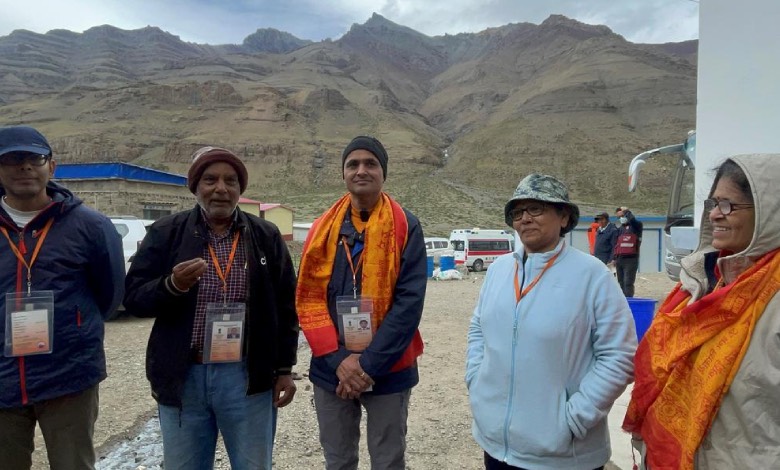Indian Pilgrims Rejoice as Kailash Mansarovar Yatra Resumes After Six Years

After a six-year pause, 36 Indian pilgrims embarked on the revered Kailash Mansarovar yatra, trekking around the 18,000-foot Mount Kailash and visiting the sacred Mansarovar Lake. This pilgrimage, marking the first since the COVID-19 pandemic and the India-China military standoff along the Line of Actual Control (LAC), signals a restoration of people-to-people ties between the two nations. The breakthrough follows agreements reached by Prime Minister Narendra Modi and Chinese President Xi Jinping during their 2024 meeting in Kazan. Upcoming initiatives include resuming direct flights, easing visa restrictions, and addressing economic issues through separate bilateral mechanisms. The yatra coincided with visits by National Security Adviser Ajit Doval and Defence Minister Rajnath Singh to China for SCO meetings.
The group, ranging in age from 18 to 69, shared their experiences with Indian journalists at Zhunzhu Pu hostel, their base for completing the parikramas (ritual circumambulations) of the mountain and lake. The Ministry of External Affairs (MEA), which oversees the Kailash Mansarovar Yatra (KMY), collaborated with Chinese authorities to ensure logistical support, including Indian cooks who set up tents to provide familiar meals. Each group is accompanied by a doctor to address health needs during the high-altitude journey.
“We’ve been eagerly awaiting the yatra’s resumption, repeatedly reaching out to the MEA and KMY,” said Shailendra Sharma, the group’s coordinator, noting the emotional significance of the pilgrimage for participants.
Suman Lata, a recently retired school teacher, told reporters that the group encountered no trace of the India-China tensions that have strained relations since the 2020 Galwan clashes and standoffs near Demchok, roughly 250 km east of Pulan (Burang). “Politics don’t concern us. The Indian government sent us off warmly, and the Chinese government has welcomed us graciously,” she said.
This group is part of 15 batches, totaling about 750 pilgrims, traveling through Nathu La in Sikkim and Lipulekh Pass in Uttarakhand between June 15 and July 2. The Lipulekh route, near the India-Nepal-China trijunction, is longer and more challenging.
Ahead of the yatra, local officials conducted a detailed survey of facilities. While some non-resident Indians (NRIs) accessed the pilgrimage through private agencies in recent years, their numbers were limited, impacting local Tibetan porters and businesses in nearby towns.
Wen Tao, Deputy Commissioner of Ali Prefecture, who welcomed the first batch, described the yatra as a “significant cross-Himalayan cultural exchange” agreed upon by Indian and Chinese leaders. Chinese authorities enhanced the Nathu La immigration checkpoint with biometric systems, multilingual interpreters, oxygen stations, and dedicated prayer areas.
Pranav Gupta from Jammu, reflecting on the 19-km trek to 5,590 meters via Dolma Point, praised the itinerary’s gradual acclimatization to high altitudes. “Faith, not just fitness, carries us through,” added Lata.
Mount Kailash, revered by Hindus as Lord Shiva’s abode and a gateway to the heavens, holds spiritual significance for multiple faiths. Buddhists regard it as “Mount Meru,” the spiritual energy center, while Jains associate it with Tirthankara Rishabdeva’s salvation at Mount Ashtapada. Tibetan Bons also venerate the peak and lake. Pilgrims of various traditions undertake koras (circumambulations) during the summer. Due to the sites’ sacredness, China banned climbing Mount Kailash in 2001-2002 and strictly regulates visits to Mansarovar Lake. The pilgrimage route was officially resumed by India and China in 1981.




